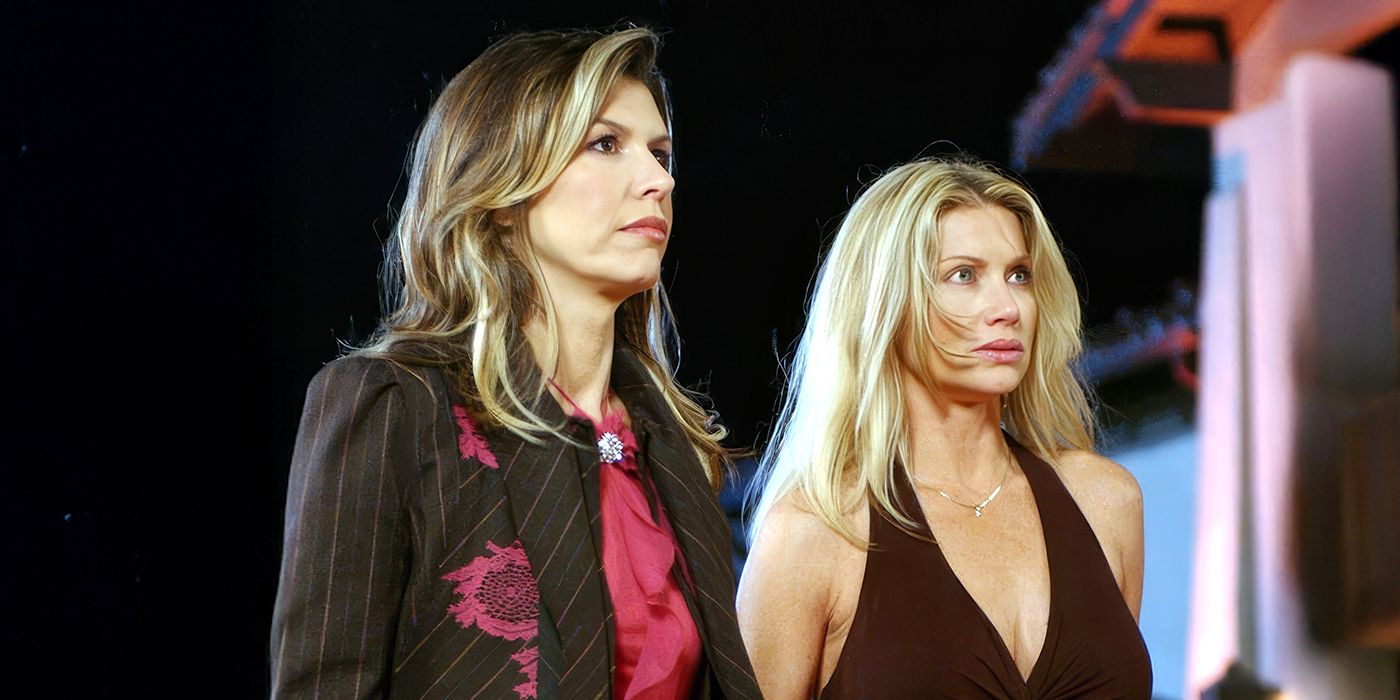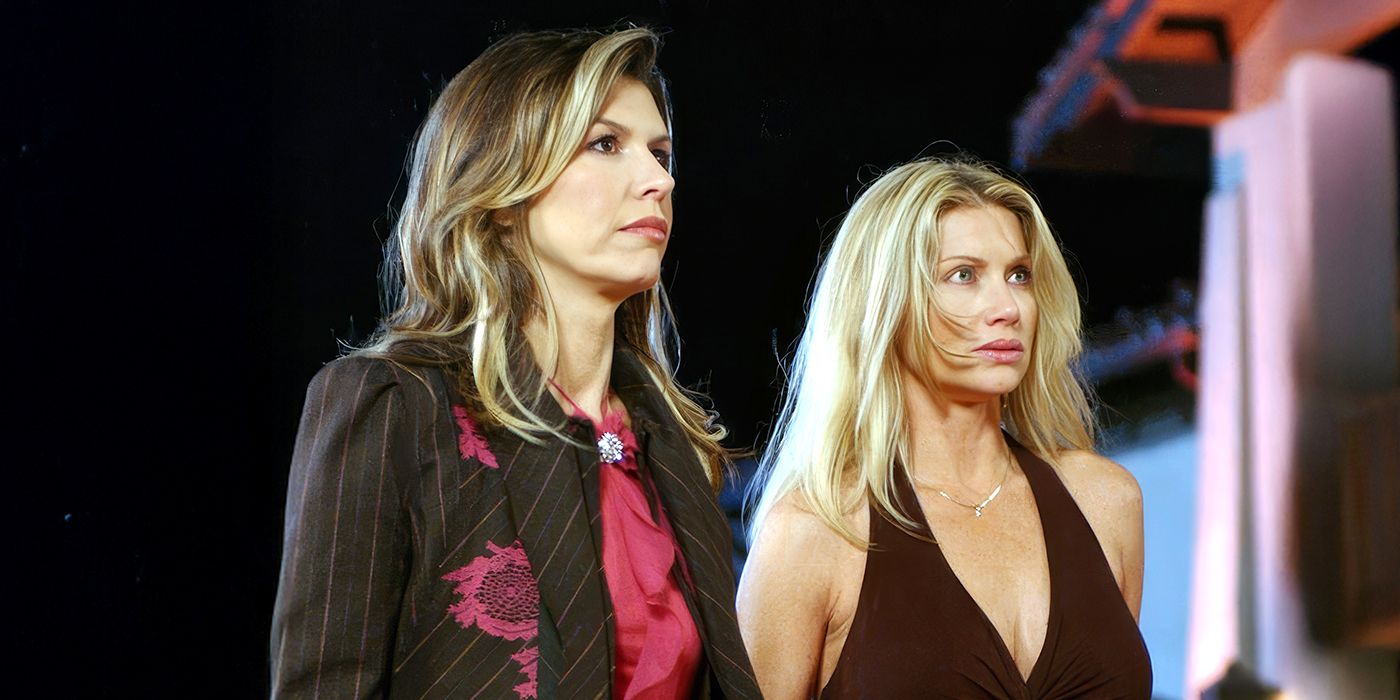
Image via Fox

Once upon a time, in the wild world of early 2000s reality TV, networks were completely brazen in their attempts to test the limits of what people would do on camera for money, fame, or closure. Even by those standards, Fox’s Who’s Your Daddy? pushed most audiences past their comfort zones. Hosted by General Hospital star Finola Hughes, the premise of the show was to take a woman who had been adopted at birth, parade a lineup of potential fathers in front of her, and have her question them in order to deduce which one was her biological father, all for the chance of winning $100,000. The January 2005 premiere episode starred T.J. Myers, a former model and actress who had been searching for her birth parents. Over the course of a one-hour special, Myers met eight men claiming to be her father. One was telling the truth, while the rest were paid actors also playing along for a shot at the cash prize. If Myers chose her real father, she would win the cash, but if she guessed incorrectly, the impostor would leave six figures richer.
‘Who’s Your Daddy?’ Was Met With Controversy From Adoption Advocates
Image via Fox
Adoption advocates sounded the alarm long before Who’s Your Daddy aired. Adam Pertman, the executive director of the Evan B. Donaldson Adoption Institute (now known as the National Center on Adoption and Permanency), condemned the program in a scathing letter to the network:
“The very idea of taking such a deeply personal, complex situation and turning it into a money-grubbing game show is perverse, destructive and insensitive to others.”
Deborah Capone, a single mother with a 5-year-old adopted daughter, launched an e-mail campaign that generated over 5,000 messages to Fox in a week asking for the show to be axed. Fox affiliate station WRAZ in Raleigh, North Carolina, refused to air the episode and protested by running an adoption-themed documentary instead. “We just don’t think adoption is a game show,” said WRAZ-TV general manager Tommy Schenck. Amid the public outcry, producers of the show insisted the concept came from only good intentions, noting that the participants, their biological parents, and their adoptive parents were all on board with the project. Kevin Healey, one of the show’s executive producers, told Reuters that an adopted friend inspired the idea. “It came from a very pure place, not from a place of trying to embarrass or harm anyone,” Healey said. Despite Healey’s claim, Fox ran a salacious promotional ad for the show that promised “the most dramatic reunion ever televised.”
Fox Aired “Who’s Your Daddy?” Despite the Backlash
Ultimately, the controversy didn’t keep Fox from airing the Who’s Your Daddy? pilot. On January 3, 2005, some 6.3 million viewers tuned in to watch Myers navigate an awkward, high-stakes guessing game. The format seemed to mimic some elements of The Bachelor and other popular reality shows with its mansion setup and Myers clad in a black cocktail dress as she approached the eight men to ask them a series of questions in hopes of identifying her father. The series further drew out the suspense by allowing Myers to watch the men on a hidden camera, and the dramatics were stretched to the limit when Myers’ father appeared silhouetted behind a door as he waited for his identity to be revealed. As she narrowed down the contenders, Myers used the catchphrase, “I feel like you could be my father.” When her dad was finally revealed, he told her, “Sweetheart, I’m home.” By the close of the show, Myers successfully identified her biological dad, a former marine named Charlie, and became $100,000 richer. The twists continued when Fox had Myers’ birth mother and half-siblings join the pair for a surprise family reunion.
Related
The Reality Show So Creepy It Only Got Three Episodes
There’s messy, and then there’s…this.
The ratings fell short of network expectations, with Who’s Your Daddy? landing fourth in its time slot, and the press didn’t hold back. The New York Times called it “a daytime soap opera show at night.” Myers was further humiliated when reports surfaced about her past appearance in the soft-core adult film Seduction of Innocence. While she defended the series as being “full of love,” even viewers who normally enjoyed reality TV’s messier moments agreed that this show had crossed a line. Fox eventually shelved the other five episodes of Who’s Your Daddy?, pushing them to air only on the Fox Reality Channel on Father’s Day.
‘Who’s Your Daddy?’ Reflects the Exploitative Nature of Early 2000s Reality TV
At the time, Who’s Your Daddy? fit right in with reality TV’s obsession with spectacle. The early 2000s gave us shows like Fear Factor, Joe Millionaire, and The Swan— shows that asked people to humiliate themselves or undergo extreme makeovers in exchange for prizes or attention. But Who’s Your Daddy? felt different. Instead of physical stunts or plastic surgery, it turned something as profoundly emotional as adoption into a cash-prize guessing game. Looking back two decades later, it’s hard to imagine a major network greenlighting such a show today. The push for more sensitive and responsible storytelling around adoption and family dynamics has grown significantly. Reality television has evolved, even though the genre remains no stranger to exploitation. Still, Who’s Your Daddy? serves as a reminder of the lengths networks once went to in search of a headline-grabbing hook, as well as the very real people caught in the middle of it.








